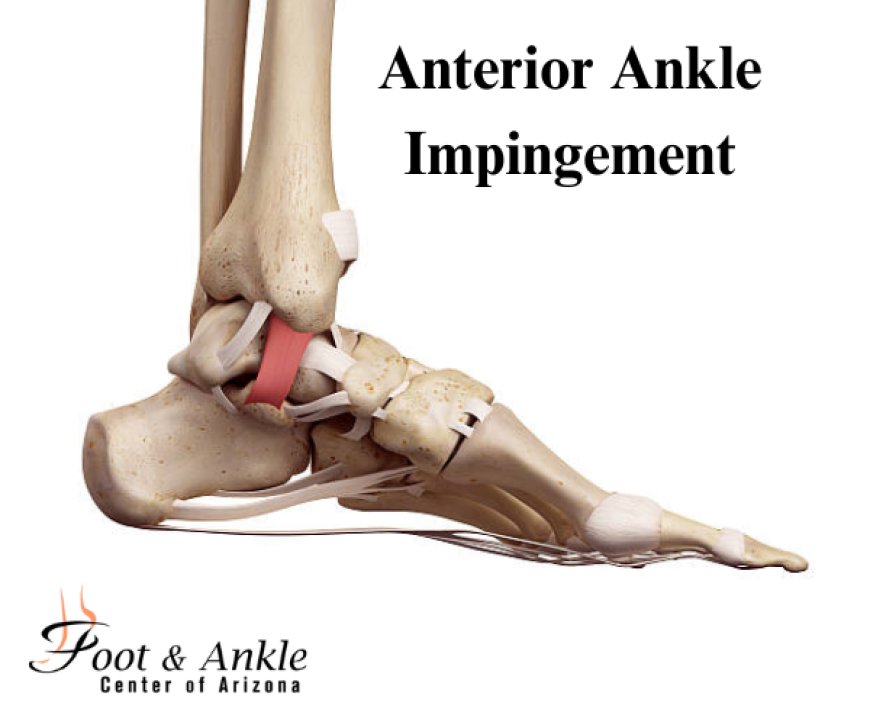Anterior Ankle Impingement: Expert Tips for Fast Relief
Do you feel pain in the front of your ankle? Does it hurt to bend, walk, or run? You may have Anterior Ankle Impingement.

Do you feel pain in the front of your ankle? Does it hurt to bend, walk, or run? You may have Anterior Ankle Impingement.
This problem happens when something pinches inside your ankle. It can cause pain, swelling, and trouble moving your foot.
Many people get it from sports, falls, or overuse. This guide will show you how to feel better fast.
Lets learn how to spot it, treat it, and keep your ankle strong.
What Is Anterior Ankle Impingement?
Impingement means pinching. Anterior Ankle Impingement means the front of the ankle gets pinched. This often happens with repeated ankle moves.
It is common in soccer players, runners, and dancers. But anyone can get it, even kids and adults.
It may happen after an ankle sprain. Old injuries can cause swelling, scar tissue, or bone spurs.
Common Signs You May Have It
How do you know if you have it? Here are some common signs:
-
Pain in the front of the ankle
-
Trouble bending the foot up
-
Swelling near the ankle
-
Stiffness after rest
-
Clicking or catching sounds
-
Pain during walking or sports
According to the Cleveland Clinic, this condition causes pain when moving the foot. Source: Cleveland Clinic
If you have any of these signs, talk to a doctor.
Tips for Fast Pain Relief
Here are simple ways to feel better:
Rest Your Ankle
Give your ankle time to heal. Stop activities that cause pain. Use crutches if needed to avoid pressure.
Use Ice
Place ice on your ankle for 1520 minutes. Do this 34 times a day. Ice helps reduce pain and swelling.
Wrap Your Ankle
An elastic bandage gives support. It also helps with swelling. Make sure its snug, not too tight.
Take Medicine
Pain relievers like ibuprofen can help. They lower swelling and ease pain. Talk to your doctor before taking any medicine.
Try Gentle Stretching
Once pain goes down, stretch your ankle slowly. This helps it move better. Do not stretch if it hurts too much.
Long-Term Care Options
Sometimes simple steps are not enough. Here are other treatments to help long-term:
Physical Therapy
A trained therapist can help. They teach you how to move safely. Therapy makes your ankle stronger.
Injections
Cortisone shots can reduce swelling. They may help your ankle move better. Ask your doctor if this is right for you.
Surgery
If nothing helps, surgery may be needed. It can remove scar tissue or bone spurs. Dr. Kris A. DiNucci will guide you every step.
Every person is different. At the Foot and Ankle Center of Arizona, your care plan is made just for you.
How to Keep Your Ankles Healthy
You can stop this problem before it starts. Here are easy tips:
-
Stretch your ankles every day
-
Warm up before sports
-
Wear shoes with good support
-
Rest when your ankle feels tired
-
Dont ignore small injuries
The American Academy of Orthopaedic Surgeons says proper warm-ups help prevent injury. Source: AAOS
If you take care of your ankles, theyll take care of you.
FAQs
What causes Anterior Ankle Impingement?
It happens from repeated ankle moves, injuries, or bone spurs. It can affect anyone, not just athletes.
Can children get this condition?
Yes. Active kids or dancers may have this issue. Its best to get help early.
Will I need surgery?
Most people feel better without surgery. If pain stays, surgery may help.
Conclusion
Anterior Ankle Impingement can hurt, but there is hope. With rest, ice, and care, many people feel better fast.
If pain doesnt go away, our team is here to help. At the Foot and Ankle Center of Arizona, we care for all ages. Dr. Kris A. DiNucci and our kind staff will guide you every step.
Contact us today or request an appointment on our website. Your feet deserve expert care in Scottsdale, AZ.











































